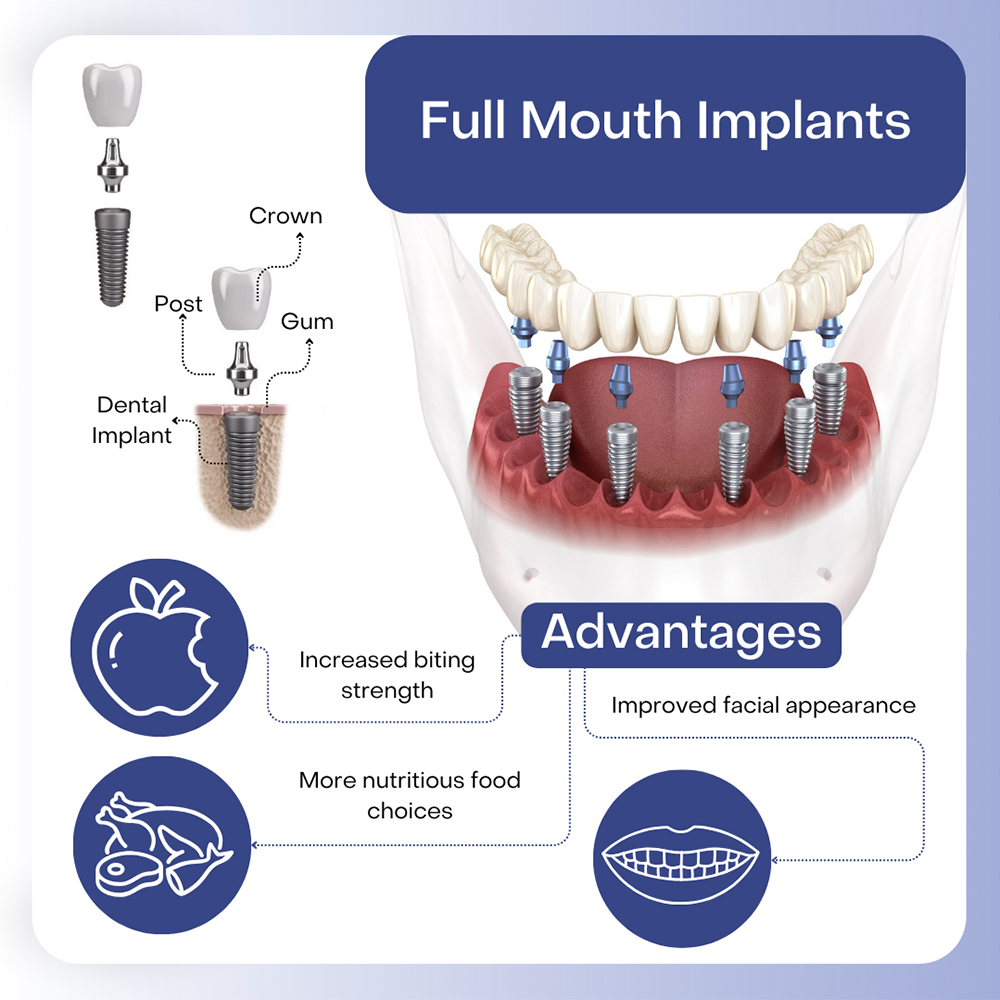Some Known Details About Dental Sense
Table of ContentsSome Known Incorrect Statements About Dental Sense Dental Sense Can Be Fun For EveryoneSome Ideas on Dental Sense You Need To KnowGetting My Dental Sense To Work
are medical gadgets operatively implanted into the jaw to bring back an individual's ability to chew or their look. They give support for man-made (fake) teeth, such as crowns, bridges, or dentures. When a tooth is lost as a result of injury or disease, a person can experience issues such as rapid bone loss, malfunctioning speech, or changes to chewing patterns that lead to discomfort.Oral dental implant systems include an oral implant body and dental implant joint and might likewise consist of a joint addiction screw. Dental implants. The dental implant body is operatively inserted in the jawbone instead of the tooth's root. The oral implant joint is generally connected to the implant body by the abutment addiction screw and prolongs with periodontals right into the mouth to sustain the affixed synthetic teeth
(https://filesharingtalk.com/members/608667-dentalsense1)Framework of The Oral Implant System choosing dental implants, talk with your dental supplier regarding the possible benefits and dangers, and whether you are a prospect for the treatment. Things to take into consideration: Your overall health and wellness is a crucial consider figuring out whether you are an excellent candidate for dental implants, exactly how long it will take to recover, and for how long the implant may remain in place.
Smoking may influence the healing process and decrease the long-lasting success of the implant. The healing procedure for the dental implant body might take a number of months or longer, during which time you commonly have a momentary joint in place of the tooth. the oral implant treatment: Carefully follow the dental health directions offered to you by your dental supplier.
6 Simple Techniques For Dental Sense
Implant failing can cause the demand for an additional surgery to repair or replace the implant system. Recovers the capacity to eat Recovers aesthetic appearance Aids maintain the jawbone from diminishing due to bone loss Preserves the health of the surrounding bone and gums Assists maintain nearby (close-by) teeth steady Boosts quality of life Damage to bordering all-natural teeth during dental implant placement Injury to the surrounding tissues during surgery, such as sinus perforation Injury throughout surgical treatment (for example, crack of surrounding jawbone) Insufficient function, such as really feeling like the teeth do not attack together usually An experience that the tooth hangs or turning in position arising from an abutment screw loosening up Implant body failure (looseness of the implant body) due to systemic infection, which may be more probable in people with uncontrolled diabetes mellitus as a result of local infection in bone and gums sustaining the dental implant body due to delayed recovery, which may be more probable in individuals who smoke Difficulty cleansing the gums around the dental implant, resulting in inadequate oral hygiene Neglected gum illness Post-surgical pins and needles due to nerve impingement or damage Always alert health treatment providers and imaging specialists that you have dental implants prior to any type of magnetic resonance imaging (MRI) or x-ray treatments.
FDA is not familiar with any type of negative occasions reported for MRI or x-ray procedures with oral implants. Dental implants systems are normally made of materials that adhere to international consensus criteria of the International Organization for Standardization (ISO) or ASTM International. These requirements have information of what makes a safe material.

An oral implant is a framework that replaces a missing tooth. With screw-like devices, the surgeon inserts an implant right into the jawbone, and it acts as an anchor for a man-made tooth, called a crown.
Dental Sense Can Be Fun For Anyone
Some individuals are not eligible for dental implant surgical treatment. It is for dental cosmetic surgeons to operate on individuals with: intense illnessuncontrollable metabolic diseasebone or soft tissue illness or infectionIf these concerns are dealt with, an individual can have the surgery. In, oral surgeons abstain from operating on people with: If individuals with any one of the above undergo oral implant surgical treatment, there is a higher danger of the implant falling short.

Oral dental implant surgical treatment is a customized process. It's not the very same for everybody. The following offers a general introduction of what you can expect your dental expert, dental cosmetic surgeon, periodontist or prosthodontist to do: Position the implant operatively. Give you time to heal. Affix the blog post and last crown, bridge or denture.
Next off, your doctor will thoroughly place the oral implant into your jaw. If your dental implant is near the front of your mouth, your dentist will certainly make a temporary tooth for you to put on till you heal.
A Biased View of Dental Sense
Your company can inform you what to anticipate in your circumstance. Throughout the healing stage, your jawbone must fuse to the oral implant. This process, called osseointegration, is vital for stability and long-lasting success. This process can take anywhere from 3 to nine months. In many cases, it might take much longer.
As soon as your dental implant heals, your dental expert can attach the joint (little connector blog post) and your final restoration (crown, bridge or denture). This generally takes concerning one hour to complete and might need a 2nd minor surgery. You should not really feel any pain throughout your dental implant procedure since your service provider will certainly utilize medicine to numb your gums.